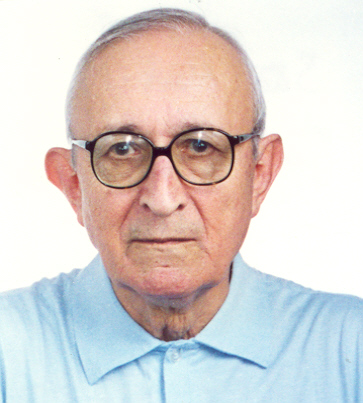Daniel Comboni
Comboni Missionaries
Institutional area
Other links
Newsletter
In Pace Christi
Civallero Simone
Fr. Simone Civallero (17.07.1921 – 22.09.2006)
At midday of 22 September Fr. Simone Civallero was found dead in his bed. He was 85 years old. He was the oldest confrere in the province South Brazil. For years he had liver problems, which he knew would eventually be the cause of his death.
Originally from Spinetta (Cuneo), he spent almost all his life in Brazil, except for a short period in Italy (1965-1968).
He arrived in Brazil in 1956. He liked to speak of the early times, especially of his first journey by ship to Brazil. When the ship was approaching land, he was suddenly smitten with an attack of nostalgia and he decided to return to Italy by the same ship he came on. He was convinced he would never be able to adapt to that world so strange and different from his own. Besides, it had been his superiors who decided to send him to Brazil. However, once he set foot on dry land, he changed his mind. Brazil took hold of his heart and kept it prisoner for more than fifty years.
His missionary experience is connected to certain places which Fr. Simone marked with his unique style and personality. He was 35 when he arrived and was appointed to the northern state of Spirito Santo where the Comboni Missionaries had been present for three or four years in the first missions of what would become the diocese of São Mateus.
His “first love” was the parish of São Gabriel da Palha where he worked hard for eight years. His name is forever associated with the main buildings: the beautiful and impressive church, the residence, the school and kindergarten. It is also associated with social initiatives such as the cooperative for coffee producers, now one of the more important of the region.#Img2#
Some aspects of his rich personality deserve mentioning. He was a man of great administrative and technical ability, which led him to carry out important jobs so that the parishes where he was sent would be open to the changes taking place in the financial, social and political fields.
Fr. Simone always took up the challenges of the moment, seeking to respond with courage and generosity. His talents were recognised by his superiors who appointed him to serve as provincial treasurer for some years.
He had great pastoral qualities and was capable of uniting and motivating people. In the various parishes he had been he left the mark of his work and how he involved people, groups and movements in it.
The registers of the parish of São Gabriel da Palha show impressive data such as those connected with the first pastoral visit of the Comboni Missionary Mgr. Giuseppe Dalvit who, in 1960, administered more than six thousand confirmations!
Fr. Simone’s pastoral work was open and committed in the social area. He was never a revolutionary, but understood the importance of uniting faith and life. He considered it part of his pastoral work to create structures of service and people’s organisations. He also possessed great clarity as regards goals to be achieved. His strong and unbending temperament often led him to act alone, even at the margins of the group. In fact he could not always patiently wait for others or acknowledge the work done together. He never used this as an excuse to do what he wanted. For him, the mission required total and single-minded dedication.
Finally, we must mention Fr. Simone’s care for the poor. He was busy helping others right up to the end. He helped people and institutions, handing over to them the donations he received from his family, friends and benefactors. He established special ties with a home for the elderly which he assisted up to his death, unknown to anyone.
We may, perhaps, consider Fr. Simone as a missionary of times gone by, with a great and generous heart. Quite recently, if he felt well enough, he went to spend some days at the homes of friends with whom he had maintained ties of friendship for decades. For example, in the home of one family in São Gabriel da Palha there was always a room at his disposal and, when his health broke down, he was considered as one of the family.
At his funeral there were representatives from most of the places he had worked. Several communities claimed the right to have his remains buried in their cemetery. Fr. Simone was buried next to two other confreres in our tomb in Nova Venécia.
(Fr. Giovanni Munari)
Da Mccj Bulletin n. 234 suppl. In Memoriam, aprile 2007, pp.24-27.

